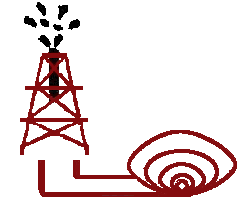 |
 |
| Home | Capabilities | Gallery | Discflo Pumps | DataBase Pumps | Contact Us |




Life Cycle Costs and the Disc Pump
Discflo disc pumps have been proven to save users significant sums of money in reduced maintenance and spare parts costs and increased reliability (uptime) and productivity over the life of the pump in numerous hard-to-pump applications throughout the world. The figure below compares cumulative costs for three designs of pumps. The table which follows lists the main cost drivers - such as excessive wear, downtime, product degradation - in these 'problem' applications and describe how the disc pump compares with other designs of pumps.
If you would like more information on Life Cycle Cost Analysis and Pumps, click here to read a detailed article published in World Pumps Magazine.
Comparing the cumulative costs (both acquisition and operating costs) for three designs of pumping system: centrifugal slurry pump, PC pump, and disc pump, in a typical hard-to-pump application, a viscous, abrasive slurry at 300GPM, 100ft TDH.
Cost Driver
How the Disc Pump Compares
Capital cost
While the Discflo pump compares reasonably well with both a centrifugal and progressive cavity pump in terms of purchase cost, we must stress here that we do not want to compete with these pumps on purchase cost alone. Over the lifetime of a pump, this cost becomes negligible, compared to the other pump related costs in hard-to-pump applications. Pump spare parts
ess than 2% of our business comes from spare parts purchased for repair. This is in direct contrast to most other pumps, which require the user to maintain a store of spare parts in-house for repairs. With a disc pump, the only parts that normally require replacement over the life of the pump are bearings and seals, standard storeroom parts readily available from local vendors. The disc pump's unique non-impingement, no close tolerance design, and pulsation-free pumping action, combined with no radial loads and heavy duty bearing frame ensures long life for pump components.L Maintenance and wear
The Discflo disc pump suffers little-to-no wear, even in highly abrasive service. Normal bearing lubrication and seal flush prevent any early failure. This is because of the protective boundary layer formed on the disc surfaces and the low angles of impingement on these surfaces. In addition, there are no close tolerances in the disc pump and flow is pulsation-free and laminar. Reliability and uptime
For many disc pump users, the greatest benefit is the high uptime and reliability of the pump. This is especially true where the pump is an integral part of the main production process and any downtime will halt production. In these cases, pump breakdown leads to huge financial losses—far greater than the purchase or running costs of the pump. The Discflo pump, because of its non-impingement and no close tolerance design, rarely fails in service and can even handle radical fluctuations in operating conditions without breaking down. Efficiency
Discflo pumps are more efficient than centrifugal slurry pumps at viscosities over 250 cPs. In fact the disc pump actually becomes more efficient as viscosity increases as it essentially works using friction (viscous drag). For most hard-to-pump applications, the Discflo pump consumes less power than a positive displacement or centrifugal pump in the same service. Productivity
The ability of the Discflo pump to handle fluids sensitive to shear or containing delicate products can lead to huge savings in reduced product losses. The disc pump's non-impingement action and laminar, pulsation-free flow ensures no damage to the product and no change in chemical characteristics. Where the end product has a high retail price, such as crystal manufacture, the return on investment from purchasing a disc pump has been in some cases less than a day!
Technology in Pumps
